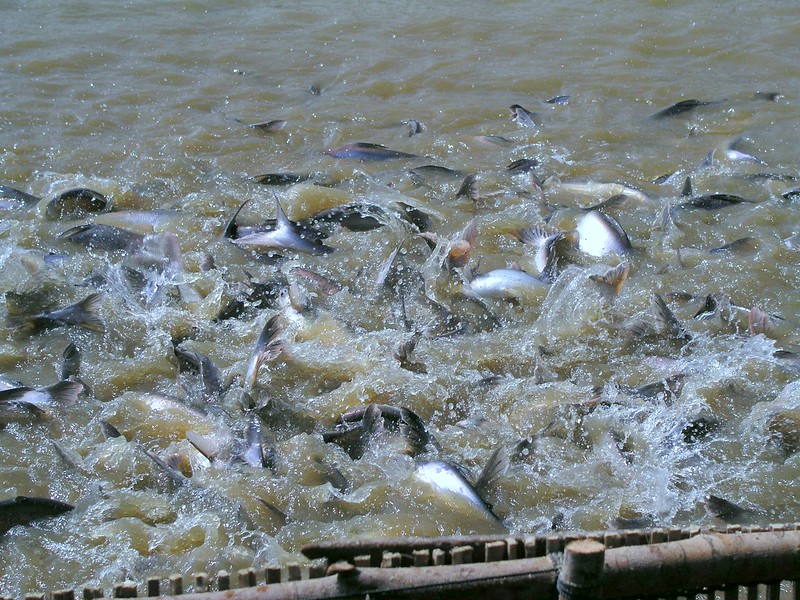
The fishes on Tonle Sap Lake, Cambodia. Photo by llee Wu, taken on 10 September 2010. Licensed under CC BY-ND 2.0
The 2006 Fisheries Law classifies fishing activity into three broad categories: family or subsistence, small-scale and commercial.
Commercial fishing is allowed only in the open season of October to May while family fishers have year-round open access. In spite of restrictions on commercial operations and the type of fishing gear used, fish captures are substantial.1
The total value of Cambodian fishery production as estimated by the Inland Fisheries Research Development Institute is in the range of $1.2 billion to $1.6 billion, of which:2
- $800 million to $1,000 million is from freshwater capture fisheries
- $97 million to $117 million is from inland aquaculture
- $11 million to $13 million is from marine aquaculture
- $325 million to $425 million is from marine capture fisheries
In 2012, in response to concerns about overfishing, which can quickly deplete local fish populations, the government withdrew all fishing lot licenses. Commercial fishing on the Tonle Sap Lake was banned permanently.3 The aim was to restore local villagers’ access to local fishing grounds and to encourage conservation.
Since the ban, 158 commercial fishing lots totaling 953,861 hectares have been cancelled, of which about 98,000 hectares have been set aside as conservation areas. The government cancelled fishing lots in a bid to replenish waterways and aid small-scale fishers, yet illegal fishing remains a critical problem.4
In March 2014, the Phnom Penh Post reported that local production has increased dramatically since the ban, stating that fishers netted 718,000 tonnes in 2013 compared to 360,000 tonnes in 2012.5
Last updated: 30 September 2015
Related to (wild capture) commercial fishing and natural fisheries
- Agriculture and fishing
- Fishing policy and administration
- Fish farming and aquaculture
- Fishing, fisheries and aquaculture
References
- 1. K.G. Hortle, S. Lieng and J. Valbo-Jorgensen. 2014. An Introduction to Cambodia’s Inland Fisheries. Mekong Development Series No. 4. Phnom Penh: Mekong River Commission.
- 2. Nao Thuok. 2014. “Assessing the Welfare Value of Cambodia’s Fisheries.” The Cambodia Herald, 1 August 2014. Accessed 1 June 2015, https://opendevelopmentcambodia.net/news/assessing-the-welfare-value-of-cambodias-fisheries/.
- 3. Vong Sokheng and Kunmakara May. 2012. “Hun Sen Bans Industry Fishing at Tonle Sap Lake Permanently.” Phnom Penh Post, 29 February 2014. Accessed 1 June 2015, http://www.phnompenhpost.com/business/hun-sen-bans-industry-fishing-tonle-sap-lake-permanently.
- 4. David Sen. 2014. “Big Dip in Illegal Fishing: Gov’t.” Phnom Penh Post, 31 March 2014. Accessed 1 July 2015, http://www.phnompenhpost.com/national/big-dip-illegal-fishing-gov’t.
- 5. Ibid.

